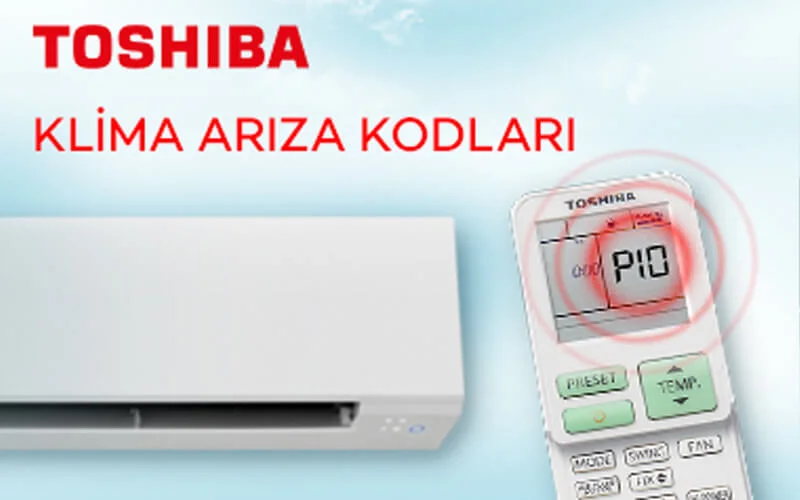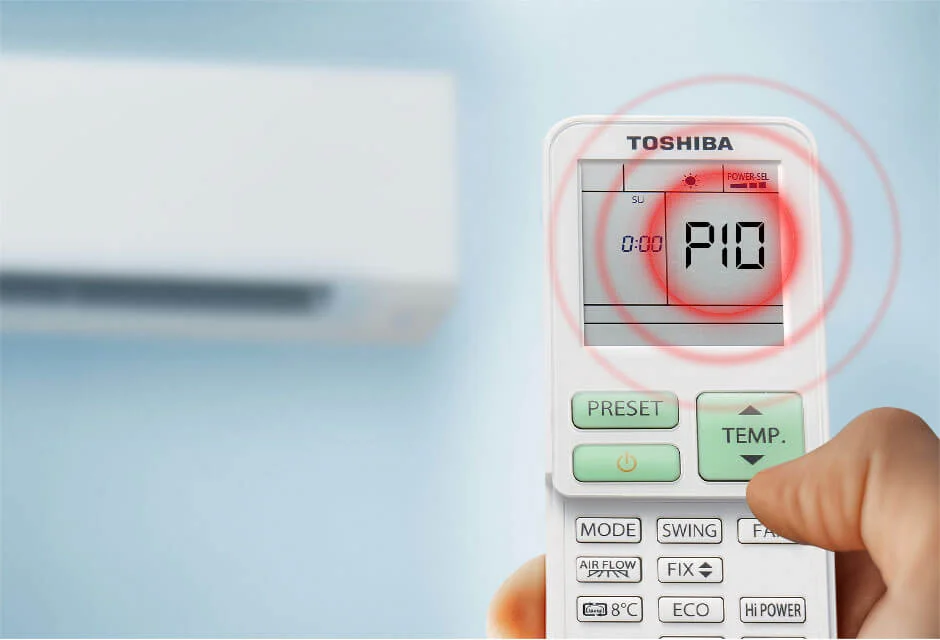Toshiba Air Conditioner Fault Codes

Toshiba air conditioner fault codes are very important for you to be able to manage your device on your own if you learn them. Toshiba air conditioners, which offer many fault codes for different situations, also show what your device needs, what problems it has and what needs to be done. If you know your air conditioner in this way, you can solve many tasks on your own and save additional time and costs. On top of that, knowing Toshiba air conditioner fault codes can also help you overcome disruptions and take more control of your home. In the rest of our content, you can examine the various fault codes in Toshiba air conditioners and distinguish them according to air conditioner types. You can find your own solution by learning which code means what. You can easily take control of your air conditioner, which air condition many different indoor areas from offices to homes, through these fault codes / signals.
P Fault Signal on Toshiba Air Conditioners

Air conditioners, which provide ideal air conditioning in many different indoor living spaces in summer and winter, may also face any malfunction. In such cases, air conditioners that give relevant signals to their users through codes are waiting for the necessary actions to be taken for a solution. Toshiba air conditioner fault codes are among the most important information for you to recognize your air conditioner. These fault codes are coded with the juxtaposition of a letter and a number and a regular list emerges. Faults at the same or similar points of the air conditioners are named similarly. For example, among these, Toshiba air conditioner P10 failure is one of the most searched and seen. P10 in Toshiba air conditioner fault codes means "indoor unit / indoor unit float is activated". So p10 indicates that the float switch is active. If it is necessary to continue from the "P" series in Toshiba fault codes, it is possible to list the list as follows:
- P01: Indoor unit fan motor fault,
- P03: Outdoor unit high discharge temperature (TD1 exceeded 115°C),
- P04: Outdoor unit high pressure switch activated (detected by high temperature on TE sensor in digital/super digital Inverter units),
- P07: Outdoor unit PCB heat sink overheated (Temperature recorded above 90°C),
- P12: Indoor unit fan motor fault - detected by feedback circuit,
- P19: Incorrect change of stored temperature (4-way valve error),
- P22: Outdoor unit fan motor IPDU error,
- P26: Outdoor unit giant transistor short circuit,
- P29: Compressor fault detected by outdoor unit feedback circuit,
- P30: Indoor unit group control tracking unit error / duplicated central control addresses,
- P31: Indoor unit PCB fault.
Toshiba VRF Air Conditioner Fault Codes
As you know, VRF air conditioning systems are systems that control more than one indoor unit with an outdoor unit. Although these air conditioning systems are generally preferred in large-scale spaces such as hospitals, offices, cottages, cafeterias, gyms, stores, they can also be used frequently in domestic spaces. If you have a living space equipped with a VRF air conditioning system, it will be to your advantage to learn Toshiba air conditioner fault codes. In these systems where an outdoor unit controls more than one indoor unit, you can learn the fault codes of different air conditioner types. For example, Toshiba Inverter air conditioner fault codes are named differently according to the errors / malfunctions in question. H01 means "Outdoor unit Inverter compressor overcurrent detected". L4 fault code signals "Outdoor unit Inverter refrigerant fin temperature increase". The outdoor unit Inverter surge protection is coded with P1. Since Toshiba air conditioner fault codes are expressed in Turkish in our content, it is easy for you to detect instant errors and malfunctions. It is also possible to list the fault codes in VRF systems as follows:
- E1 Fault: Room temperature sensor error,
- E2 Malfunction: Evaporator temperature sensor error,
- E3 Fault: Condenser temperature sensor fault (Certain models only),
- E4 Malfunction: Display panel communication error,
- E06: Signals a malfunction of the indoor unit.
- P1: Lower tray full warning.
Smart Solutions
Having a wide range of information from the most common to rare Toshiba air conditioner fault codes will always put you one step ahead. However, you may also need to call the authorized service near you for some malfunctions. For example, if the Toshiba air conditioner filter light is on, this means that the 1000 hours of operation has come to an end. When this "FILTER" light on the indoor unit display lights up after 1000 hours of operation, the air filter needs to be cleaned. After cleaning the filter, simply press the "FILTER" button on your remote control to turn off and reset the "FILTER" light. P1 malfunction, which can be seen in VRF systems, means that the lower tray is full. To solve this problem, you must first connect the drain hose and drain the water accumulated there. Toshiba E01 fault refers to a communication problem between the indoor unit and the remote control of the air conditioner. This malfunction, which usually occurs when the indoor unit is turned off, can also occur when the battery in the remote control runs out. If you wish, you can provide the necessary solution for Toshiba air conditioner fault codes by clicking here and using our communication channels.
